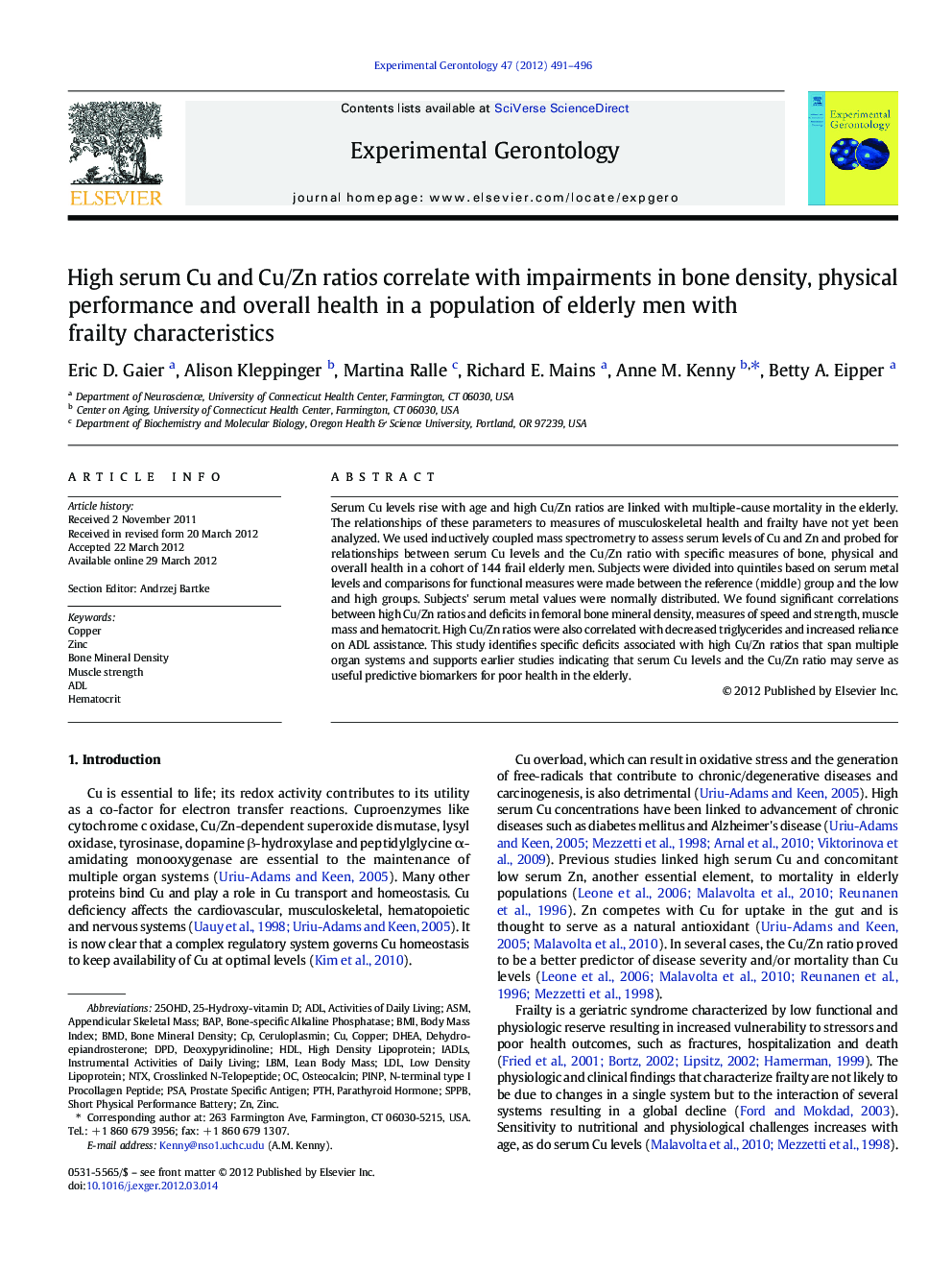| Article ID | Journal | Published Year | Pages | File Type |
|---|---|---|---|---|
| 1906559 | Experimental Gerontology | 2012 | 6 Pages |
Serum Cu levels rise with age and high Cu/Zn ratios are linked with multiple-cause mortality in the elderly. The relationships of these parameters to measures of musculoskeletal health and frailty have not yet been analyzed. We used inductively coupled mass spectrometry to assess serum levels of Cu and Zn and probed for relationships between serum Cu levels and the Cu/Zn ratio with specific measures of bone, physical and overall health in a cohort of 144 frail elderly men. Subjects were divided into quintiles based on serum metal levels and comparisons for functional measures were made between the reference (middle) group and the low and high groups. Subjects' serum metal values were normally distributed. We found significant correlations between high Cu/Zn ratios and deficits in femoral bone mineral density, measures of speed and strength, muscle mass and hematocrit. High Cu/Zn ratios were also correlated with decreased triglycerides and increased reliance on ADL assistance. This study identifies specific deficits associated with high Cu/Zn ratios that span multiple organ systems and supports earlier studies indicating that serum Cu levels and the Cu/Zn ratio may serve as useful predictive biomarkers for poor health in the elderly.
► Serum Cu/Zn ratios in elderly men were normally distributed. ► High Cu/Zn ratios were associated with low bone mineral densities and impaired muscle strength. ► High serum Cu and Cu/Zn ratios were associated with low hematocrits. ► The Cu/Zn ratio may serve as a useful functional biomarker in the elderly.
